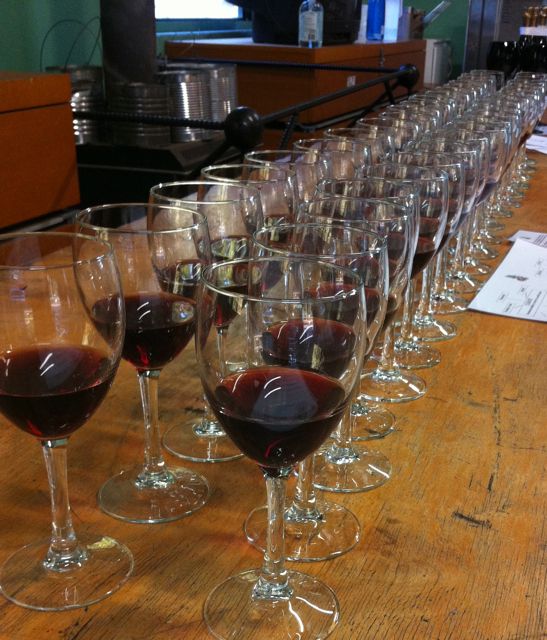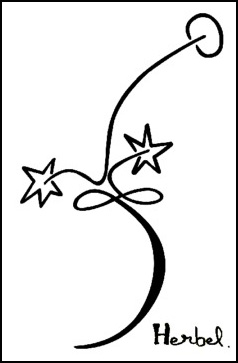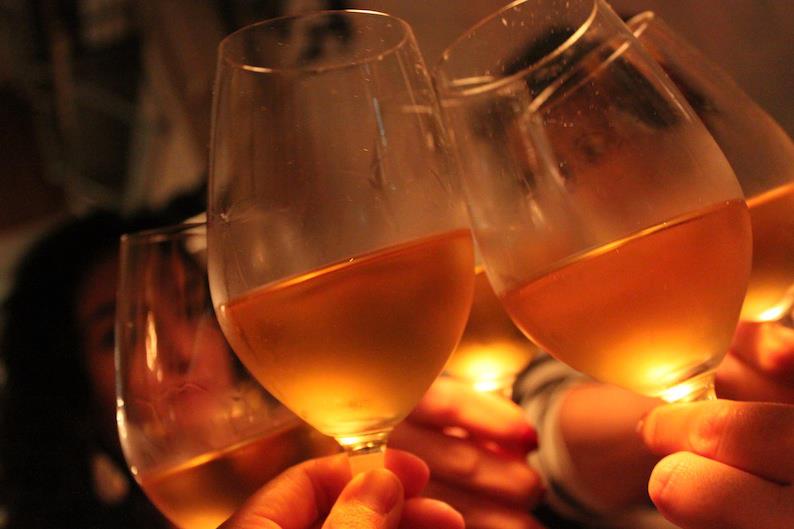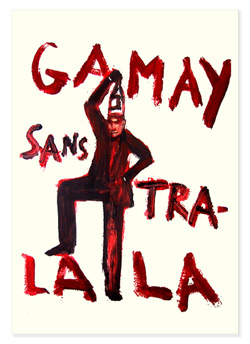A revolutionary wine survey about wine surveys has once again exposed the vast chasm in our knowledge about the drinking habits of Joe and Joanna public and thereby pointed out the irrefutable need for more wine surveys. Incontrovertible research demonstrates that people living below the poverty line tended to spend less on a bottle of wine than plutocrats, Russian oligarchs and Andrew Lloyd Webber. It was further discovered that drinks advertising aimed at babies and people in a vegetative state tended to be less effective than that targeted at impressionable twenty-somethings and alcoholics. Other extraordinary revelations include the fact that all women drink Pinot Grigio to a man, that Australian wine is physically louder than French wine and Chateau Latour would sell far more bottles off supermarket shelves if it were varietally-labelled Posh Frog Cabernet Merlot and sported a day-glow back label explaining that the wine could be drunk with red meat or poultry or quaffed as an aperitif.

You can’t read a wine mag without blowing away some serious froth about trends. It is pretty obvious that we need a national Grenache day like a hole in the bottom of a wine glass, although I reckon an exeat for the great Airen grape would be apposite, and, surely not a day should go by when we should not obsess about which expensive red the great Chinese people have chosen to adulterate their coca cola with, or ruminate about the ever-fascinating state of the Bore-deaux wine market or the next designer closure.
The average wine trend is nothing if not flimflambuoyant.
We have always observed the truism that a stopped clock tells the right time twice a day. Trends, are by definition, ephemeral. They come, they disappear, they are repackaged, they come and are soon forgotten. But now they have their own Facebook page. Lest ye forget. Which is something. Our buying and selling mirrors what we like to drink rather than ticking essential boxes. However, if you had to analyse the direction that we were going in you would notice certain patterns. Here are some of them; call ‘em quirks or foibles if you like but this kind of variety makes the wine world go round, and, in the case of natural wine, spin off its critical axis.
The Bearable Lightness of Low Alcohol
Numbering Txacoli, various Ganevats and Jurassic confreres, Pet Nat galore and more surprisingly Rhônes from Romaneaux-Destezet – we have plenty of wines limboing beneath 12%. Landron, Clos Roche Blanche, Capriades, Etienne Courtois and Jean Maupertuis makes wines in the mid 11%s. Wines from Carmarans, Navarre, Octavin, Caroline Marion (Chablis), Raboso, Cave de Morgex, Dinavolino. Even in Sicily for heaven’s sake Arianna Occhipinti’s dance at 12 or under. And where you might expect flaming abvs, there is some utterly cool restraint – Anton von Klopper makes pale Pinot weighing in at 12.5%. Villalobos Carignan at 12% and Tom Shobbrook’s skin contact Savvy is 11%. Hence the second bottle.

As for the sweets Moscato d’Asti gives us base vibes at 5.5, followed by various Framinghams at 7.5/8 and the sweet Chenin from Les Vignes Herbels (8).
Pitifully Low Yields
Yquem? Mega-yields! Try 2hl/ha – Sul Q from Domaine Ganevat – December harvested a botrytis Savagnin crossed with a Vin de Paille, Hatzidakis Voudomato. Vin d’Autan (hl/ha). Reverie from Les Vignes Herbels (5hl/ha). Thimbles at the ready for Cambridge Road, Pyramid Valley, Matassa, Domaine des Foulards Rouges, Olivier Pithon, Muscadet in 2012 (probably) and some of the super Chenin producers in the Loire. As for Villalobos we reckon that the yields are incalculably low.
Old Gold – Vieilles Vignes, Vigna Vecchia, Old Vines

Honorary zimmer frame to Henry Marionnet’s Provignage, a Romorantin from 160 year old vines. Thierry Puzelat’s version of the same grape is also a centenarian proving that all ancient roads may well have led to Romorantin. Hale and hearty mentions to Gianfranco Manca’s and Dettori ‘s150 + Cannonau. Queen’s telegram, sorry telemessage, to the many centenarians flourishing in the Languedoc – Matassa, Gravillas, Pierre Cros, Clos du Grillons (111 year young Bourboulenc), Barroche, Gramenon, Romaneaux-Destezet, Barroche, Monte de Grazia, Ganevat, Hatzidakis, Luyt. Some of Provignage wines trace their ancestry back several hundred years with the Hatzidakis Voudamato hitting the half a millennium bulleye. It is vine or a bird’s nest? With age these nobbled and gnarly vines acquire a rough wisdom.
Obscure Grapes
Preserving the autochthonous grape gives us not only reminders of heritage but diversity. For decades old vines were grubbed up to make way for the outsiders. Value them and their flavours for you may never see their like again.
Ribeyrenc Noir – our new Aspiran (sic) number one from the Languedoc courtesy of Thierry Navarre
Albarin Blanc – from Tierra de Cangas. Nowt to do with Galician variety of similar name
Gringet – top of the obscure Alpine grape
Gascon – still clinging on in Touraine
Vigieriega – from the lunar landscape of high Granada
Beclan – one of the melange of ancient Jurassic varieties. I can’t remember the other seventeen obscure one
Cesar – the Roman grape that invaded Burgundy and left only a tiny residual footprint in the north
Folle Noire aka Jurancon Noir
Mirefleurien – Auvergnate grape named after the village it comes from
Negret de Banhars – 35% in one vineyard in Aveyron belonging to Nicolas Carmarans
Voudoumato – Bullseye! In Santorini
Zero sulphur wines
The use of sulphur dioxide as an additive should be judicious
Frick, Binner, Ganevat, Houillon, Bornard, Octavin, Foulards Rouges, Le Bout du Monde, Leonine, Dard et Ribo, Mazel, Cousin, Martinez, Courault, Chaffardon, Maupertuis, Pyramid Valley, Testalonga, Luyt….
Animals in vineyards

Some use horses (equine fertilising ploughs), others have cattle, goats, sheep, chickens or ducks strutting their stuff amongst the vines. A living vineyard is a happy vineyard.
Burn Cottage, Felton Road, Cava Recaredo, Oliver Cousin, Alexandre Bain, Champagne Philipponnat, Didier Barral, Maxime Magnon, Le Bout du Monde, Sylvain Martinez, Massa Vecchia, Cascina degli Ulivi, I Vigneri, Villalobos, De Martino, Luyt, Cecchin, Elgin Ridge and many others…
Qvevri, Amphorae & Eggs – but that’s enough about my solicitors
The size, shape and material of the fermenting and maturing vessels contributes greatly to the flavour and texture of the wine.
Paolo Vodopivec, Friuli – amphora/qvevri
Dominique Belluard, Savoie – eggs and amphore
Jean-Claude Lapalu, Brouilly – amphora
Domaine Hauvette, Provence – egg
Vino di Anna, Etna – qvevri
COS, Vittoria – amphora (buried)
Elisabetta Foradori, Trentino – amphora
Natural Selection Theory – ceramic egg
Castagna – egg
Pheasant’s Tears, Georgia – qvevri
Iago, Georgia – qvevri
Alaverdi Monastery, Georgia – qvevri
Waiter, waiter, my wine is orange

Skin contact brings colour, phenolics, tannin and layers of flavour and a complaint from table 22 in the corner that their wine is oxidised and tastes of marmalade. We love the cushioned texture, the exotic spice box aromas and the mineral depth of these wines; they have a thrilling natural energy. Nuff said. Decant and admire the following examples:
Testalonga, Princic, Vodopivec, Panevino, La Stoppa, Dinavolo, Tres Uvas, Baccabianca, Massa Vecchia, Shobbrook, Natural Selection Theory…
The High Life (metres above sea level)
Honorary oxygen masks to:
De Martino Alto Los Toros Chile: 2000 of your Andean metres gives this Syrah its lofty appeal
Cerro Los Monjas, Granada: 1364 m precisely asl in the Sierra de la Contraviesa-Alpujarra (Granada), a lunar landscape. Dark, raisiny reds and crazy whites slightly down the slopes from a medley of grapes.
Blanc de Morgex et de la Salle Vine Estremi: 1320 metres ++. The height of Alpine folly, heroic viticulture and a grape that is snow resistant. Glacial as a Hitchcock heroine, the Cresta Run for the tongue.
Chateau Musar Blanc: over 1,200 metres. A white made from Obaideh and Merwah who sound like of a couple old Testament prophets. May look as golden as a naked pineapple sunbathing on a beach but this cool beaut is wearing skis.
I Vigneri : 1,200 metres, Etna terroir where you are never far from a volcanic eruption. The white comes from Riesling on French rootstock, Carricante and Grecanico, amongst others. The rose, Vinudilice, vaults to 1,300 m, the vines, cultivated by hand and by mule, located in a holly oak wood.
Wines with vaguely amusing names

Le Vin est Une Fete Rouge
Mais Ou Est Donc Ornicar
Sous Les Cailloux des Grillons
Pedro Rabernet
Trinch !
Hurluberlu
Gamay Sans Tra La La
Gamay Ca’Cest Bon
Gammes-en-May
In Cot We Trust
J’en Veux !!!
Lard des Choix
Le Petit Tetu
Well, I’m easily amused.

